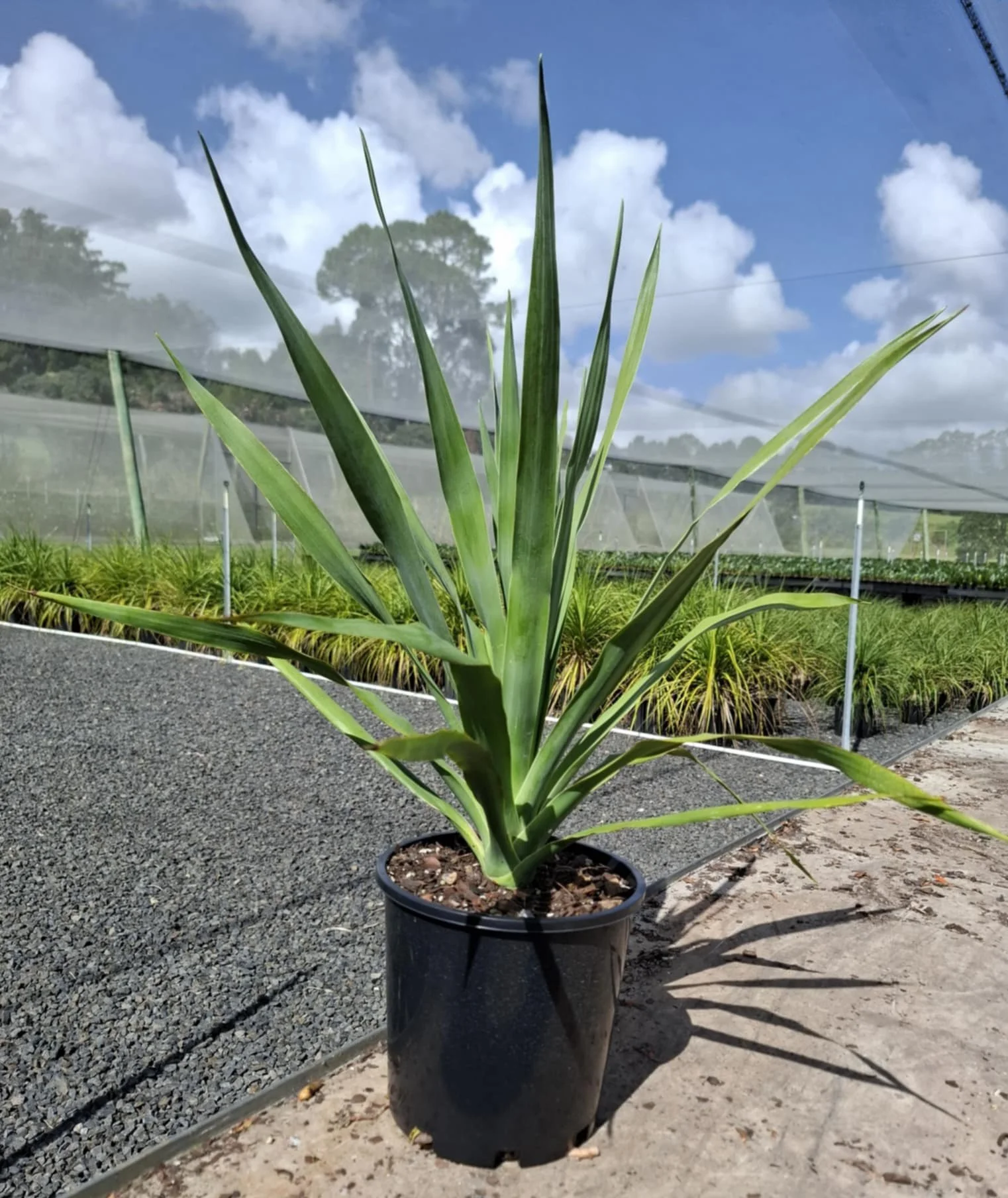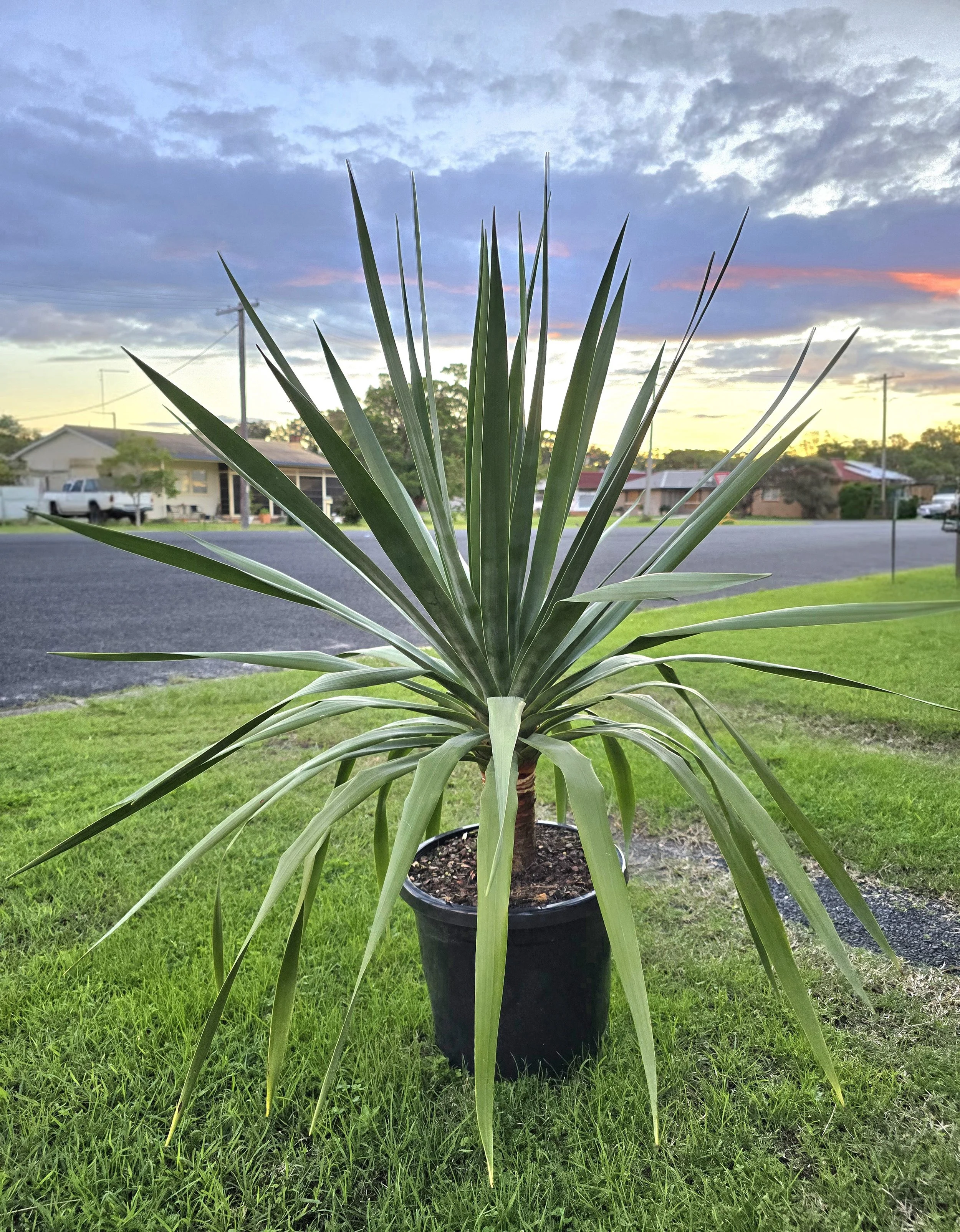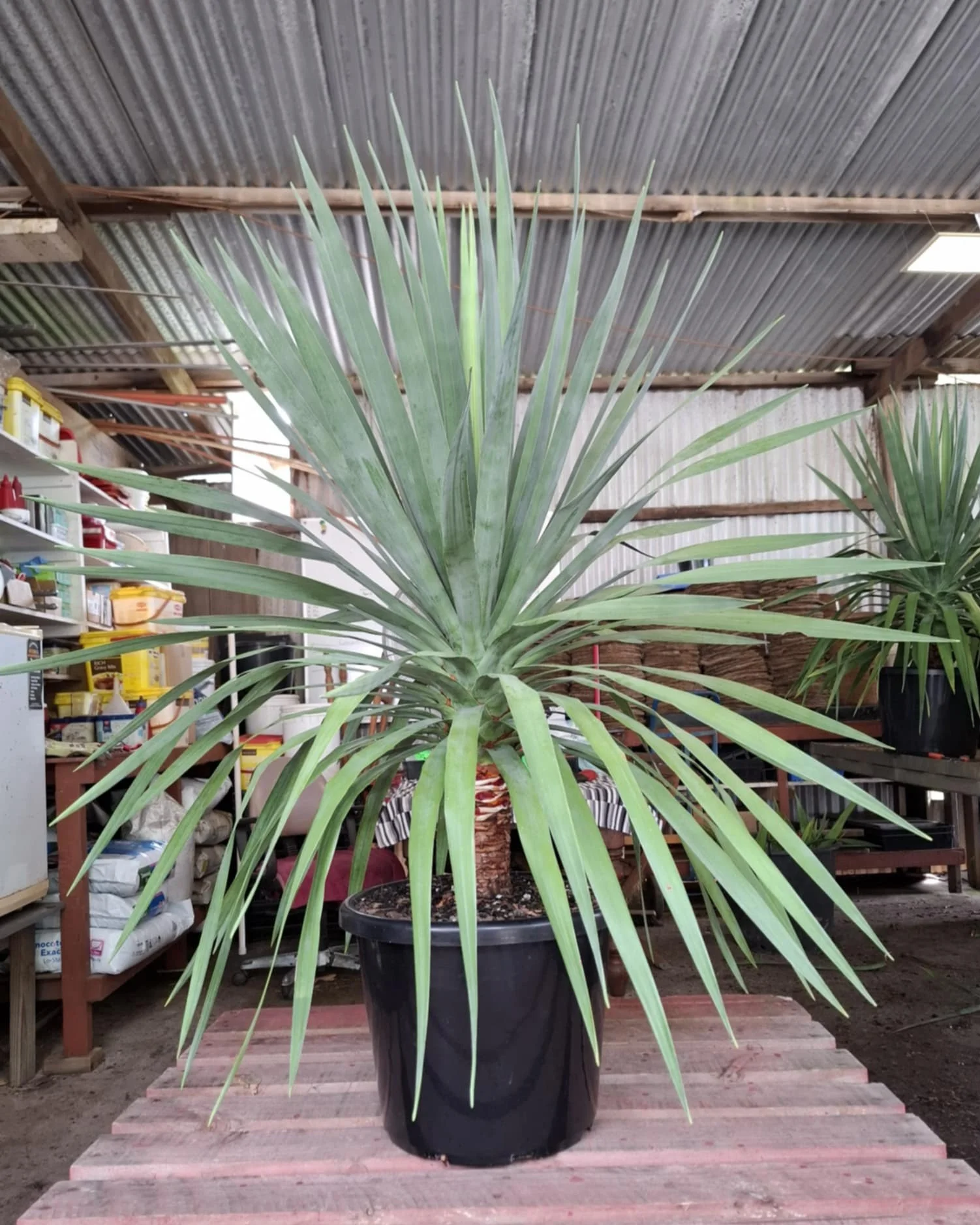 Image 1 of 3
Image 1 of 3

 Image 2 of 3
Image 2 of 3

 Image 3 of 3
Image 3 of 3




Dragon Tree
🌳 Dragon Tree (Dracaena draco)
Scientific Name:
Dracaena draco
Common Names:
Dragon Tree, Canary Islands Dragon Tree
Family:
Asparagaceae (formerly placed in the Agavaceae family)
Native Range:
Canary Islands, Madeira, Cape Verde, and parts of western Morocco.
📏 Physical Description
Growth Habit:
A slow-growing, tree-like succulent, known for its striking, architectural form.Height:
Can eventually reach up to 10–15 meters (30–50 feet) tall in ideal conditions, though much smaller when grown in pots.Trunk:
Thick, grayish, often single-stemmed for many years before branching.
When it does branch, it creates a broad, umbrella-like canopy.Leaves:
Long, narrow, sword-shaped leaves, typically blue-green to gray-green, measuring 45–60 cm (18–24 inches) long.
They grow in dense rosettes at the ends of branches.Sap (Dragon’s Blood):
When cut or damaged, the trunk releases a reddish resin, historically called “Dragon’s Blood”, used in dyes, varnishes, and traditional medicine.
🌸 Flowers and Fruit
Flowering:
Usually after 10–15 years, producing large, branched panicles of small, fragrant, greenish-white flowers.Bloom Time:
Summer to early autumn, though it can vary by climate.Fruit:
Produces small, round, orange berries after flowering.
🌱 Cultivation and Care
Light:
Prefers full sun to partial shade.
In very hot climates (like inland Queensland summers), some protection from intense afternoon sun is ideal when young.Watering:
Drought-tolerant once established.
Water thoroughly but infrequently. Allow soil to dry out completely between waterings.Soil:
Well-draining, sandy or loamy soil.
Good drainage is essential to prevent root rot.Temperature:
Prefers warm, dry climates.
Hardy to about -2°C (28°F) for short periods once mature, but protect young plants from frost.Fertilizing:
Feed lightly with a balanced slow-release fertilizer during spring and summer.Pruning:
Rarely needed, but can be done to remove dead leaves or shape the canopy.
✅ Key Features
Iconic Appearance:
The Dragon Tree’s bold silhouette and sculptural form make it a popular choice for Mediterranean, coastal, desert, and modern landscapes.Longevity:
Can live for hundreds of years in the wild.Low Maintenance:
Very suitable for low-water gardens, rockeries, and container growing.Cultural Note:
The Dragon Tree is symbolically important in the Canary Islands, where it is considered a natural monument.
✅ Quick Care Summary
RequirementDetailsLightFull sun to partial shadeWaterDeep, infrequent wateringSoilSandy, well-drainingTemperaturePrefers warm, frost-free climatesGrowth RateVery slow, but long-lived
🌳 Dragon Tree (Dracaena draco)
Scientific Name:
Dracaena draco
Common Names:
Dragon Tree, Canary Islands Dragon Tree
Family:
Asparagaceae (formerly placed in the Agavaceae family)
Native Range:
Canary Islands, Madeira, Cape Verde, and parts of western Morocco.
📏 Physical Description
Growth Habit:
A slow-growing, tree-like succulent, known for its striking, architectural form.Height:
Can eventually reach up to 10–15 meters (30–50 feet) tall in ideal conditions, though much smaller when grown in pots.Trunk:
Thick, grayish, often single-stemmed for many years before branching.
When it does branch, it creates a broad, umbrella-like canopy.Leaves:
Long, narrow, sword-shaped leaves, typically blue-green to gray-green, measuring 45–60 cm (18–24 inches) long.
They grow in dense rosettes at the ends of branches.Sap (Dragon’s Blood):
When cut or damaged, the trunk releases a reddish resin, historically called “Dragon’s Blood”, used in dyes, varnishes, and traditional medicine.
🌸 Flowers and Fruit
Flowering:
Usually after 10–15 years, producing large, branched panicles of small, fragrant, greenish-white flowers.Bloom Time:
Summer to early autumn, though it can vary by climate.Fruit:
Produces small, round, orange berries after flowering.
🌱 Cultivation and Care
Light:
Prefers full sun to partial shade.
In very hot climates (like inland Queensland summers), some protection from intense afternoon sun is ideal when young.Watering:
Drought-tolerant once established.
Water thoroughly but infrequently. Allow soil to dry out completely between waterings.Soil:
Well-draining, sandy or loamy soil.
Good drainage is essential to prevent root rot.Temperature:
Prefers warm, dry climates.
Hardy to about -2°C (28°F) for short periods once mature, but protect young plants from frost.Fertilizing:
Feed lightly with a balanced slow-release fertilizer during spring and summer.Pruning:
Rarely needed, but can be done to remove dead leaves or shape the canopy.
✅ Key Features
Iconic Appearance:
The Dragon Tree’s bold silhouette and sculptural form make it a popular choice for Mediterranean, coastal, desert, and modern landscapes.Longevity:
Can live for hundreds of years in the wild.Low Maintenance:
Very suitable for low-water gardens, rockeries, and container growing.Cultural Note:
The Dragon Tree is symbolically important in the Canary Islands, where it is considered a natural monument.
✅ Quick Care Summary
RequirementDetailsLightFull sun to partial shadeWaterDeep, infrequent wateringSoilSandy, well-drainingTemperaturePrefers warm, frost-free climatesGrowth RateVery slow, but long-lived